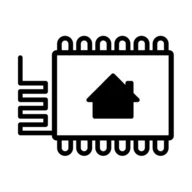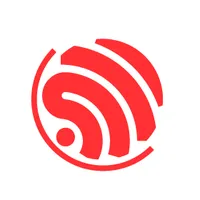CrowPanel ESP32 HMI 4.3-inch Display¶
Requirements for the relevant version of the routine
Board Version
esp32 by Espressif System 2.0.14/2.0.15
Lib Related Versions
Ivgl: 8.3.3
TFT_eSPI: 2.5.0
LovyanGFX: 1.1.8
The libs are provided directly by our wiki, just use the libs provided by the wiki.
This example is suitable for generating UI using Squareline version 1.5.1 or earlier.
Description¶
Elecrow ESP32 4.3-inch display is a powerful HMI touch screen with a 480*272 resolution LCD display. It uses the ESP32-S3-WROOM-1-N4R2 module as the main control processor, with a dual-core 32-bit LX6 microprocessor, integrated WiFi and Bluetooth wireless functions, a main frequency of up to 240MHz,providing powerful performance and versatile applications, suitable for IoT application devices and other scenes.
The module includes a 4.3-inch LCD display and a driver board. The display screen uses a resistive touch technology and comes with a resistive touch pen, making the screen usage more flexible. In addition, the board has reserved a TF card slot, multiple peripheral interfaces, USB interface, speaker interface, battery interface, etc., providing more expansion possibilities. It supports development environments such as Arduino IDE, Espressif IDF, Lua RTOS, Micro Python, and is compatible with the LVGL graphics library. This enables developers to not only customize their own UI interfaces but also to create interesting projects quickly and easily, greatly shortening the development cycle.
The ESP32 4.3-inch display is suitable for a wide range of scenes such as automotive HMI, medical equipment, industrial control, power, civil electronics, automation, GPS, new energy, and IoT application devices. Its various interfaces and expansion functions make it able to meet the needs of different fields, providing users with a more comprehensive solution.
Module: DIS06043H
Updated Record¶
Please click on the "UPDATED RECORD" below to check the updated details in text.
Please watch below to check the updated explanation.
Feature¶
- lIntegrated ESP32-S3-WROOM-1-N4R2 module,built-in wireless communication 2.4 GHz Wi-Fi (802.11 b/g/n) and Bluetooth 5.0;
- Support development environment Arduino IDE, Espressif IDF, Lua RTOS, Micro python and compatible with LVGL graphics library;
- Built-in LVGL demo interface and Arduino example, plug and play;
- LCD 480*272 4.3 inches TFT-LCD with driver IC NV3047;
- Rich peripheral interfaces and expansion functions enable it to meet the needs of different fields.
Specification¶
- Model: 4.3 inch ESP32 display
- Main Processor: ESP32-S3-WROOM-1-N4R2
- Resolution: 480x272
- Color Depth: 16M
- Touch Type: Resistive Touch Screen
- Touch Panel: TN Panel
- Screen: TFT-LCD Screen
- Display driver: NV3047
- External power supply: DC5V-2A
- Interface: 1xTF Card Slot, 1x GPIO, 1xSpeak, 1x UART1, 1xUART0
Pin Out¶
| Pin Name | Description | Connector Type |
|---|---|---|
| SPK | Output audio signal,connected with speakers. The motherboard comes with a power amplifier chip circuit. | PH2.0-2P |
| PWR | Power LED. | |
| RST | Reset button. Push it to reset the system. | |
| BOOT | ||
| GPIO_D | Digital and artificial I/O interface. | HY2.0-4P |
| TF | Provide off-line save and extra storage space. | |
| UART1 | Build the communication among Logic modules, including serial communication module and print module. | HY2.0-4P |
| BAT | Connect with the lithium battery. (With the battery charging circuit) | PH2.0-2P |
| UART0 | Provide serial communication, supply voltage(transform USB to UART0) and serial information printing. | USB-C |
| 4.3-inch HMI Port | Pin Number |
|---|---|
| GPIO_D | IO37, IO38(Can be used to simulate UART or IIC) |
| UART1 | RX(IO18); TX(IO17) |
| SPK(I2S) | I2S-CTRL(3V3); I2S-MCLK(IO19); I2S-BCLK(IO35); I2S-SDIN(IO20) |
| SD Card Slot(SPI) | MOSI(IO11); MISO(IO13); CLK(IO12); CS(IO10) |
| LCD Backlight | IO2 |
Schematic Diagram¶
ESP32-S3 and TFT display wiring pins
Schematic Diagram:
Definition in the main program(If use LovyanGFX library):
#define screenWidth 480
#define screenHeight 272
class LGFX : public lgfx::LGFX_Device
{
public:
lgfx::Bus_RGB _bus_instance;
lgfx::Panel_RGB _panel_instance;
lgfx::Light_PWM _light_instance;
lgfx::Touch_XPT2046 _touch_instance;
LGFX(void)
{
{
auto cfg = _panel_instance.config();
cfg.memory_width = screenWidth;
cfg.memory_height = screenHeight;
cfg.panel_width = screenWidth;
cfg.panel_height = screenHeight;
cfg.offset_x = 0;
cfg.offset_y = 0;
_panel_instance.config(cfg);
}
{
auto cfg = _bus_instance.config();
cfg.panel = &_panel_instance;
cfg.pin_d0 = GPIO_NUM_8; // B0
cfg.pin_d1 = GPIO_NUM_3; // B1
cfg.pin_d2 = GPIO_NUM_46; // B2
cfg.pin_d3 = GPIO_NUM_9; // B3
cfg.pin_d4 = GPIO_NUM_1; // B4
cfg.pin_d5 = GPIO_NUM_5; // G0
cfg.pin_d6 = GPIO_NUM_6; // G1
cfg.pin_d7 = GPIO_NUM_7; // G2
cfg.pin_d8 = GPIO_NUM_15; // G3
cfg.pin_d9 = GPIO_NUM_16; // G4
cfg.pin_d10 = GPIO_NUM_4; // G5
cfg.pin_d11 = GPIO_NUM_45; // R0
cfg.pin_d12 = GPIO_NUM_48; // R1
cfg.pin_d13 = GPIO_NUM_47; // R2
cfg.pin_d14 = GPIO_NUM_21; // R3
cfg.pin_d15 = GPIO_NUM_14; // R4
cfg.pin_henable = GPIO_NUM_40;
cfg.pin_vsync = GPIO_NUM_41;
cfg.pin_hsync = GPIO_NUM_39;
cfg.pin_pclk = GPIO_NUM_42;
cfg.freq_write = 8000000;
cfg.hsync_polarity = 0;
cfg.hsync_front_porch = 8;
cfg.hsync_pulse_width = 4;
cfg.hsync_back_porch = 43;
cfg.vsync_polarity = 0;
cfg.vsync_front_porch = 8;
cfg.vsync_pulse_width = 4;
cfg.vsync_back_porch = 12;
cfg.pclk_active_neg = 1;
cfg.de_idle_high = 0;
cfg.pclk_idle_high = 0;
_bus_instance.config(cfg);
_panel_instance.setBus(&_bus_instance);
}
{
auto cfg = _light_instance.config();
cfg.pin_bl = GPIO_NUM_2;
_light_instance.config(cfg);
_panel_instance.light(&_light_instance);
}
{
auto touch_cfg = _touch_instance.config();
touch_cfg.x_min = 100; // タッチスクリーンから得られる最小のX値(生の値)
touch_cfg.x_max = 4000; // タッチスクリーンから得られる最大のX値(生の値)
touch_cfg.y_min = 100; // タッチスクリーンから得られる最小のY値(生の値)
touch_cfg.y_max = 4000; // タッチスクリーンから得られる最大のY値(生の値)
touch_cfg.pin_int = 36; // INTが接続されているピン番号
touch_cfg.bus_shared = true; // 画面と共通のバスを使用している場合 trueを設定
touch_cfg.offset_rotation = 0;// 表示とタッチの向きのが一致しない場合の調整 0~7の値で設定
// SPI接続の場合
touch_cfg.spi_host = SPI2_HOST; //HSPI_HOST;// 使用するSPIを選択 (HSPI_HOST or VSPI_HOST)
touch_cfg.freq = 1000000; // SPIクロックを設定
touch_cfg.pin_sclk = GPIO_NUM_12; // SCLKが接続されているピン番号
touch_cfg.pin_mosi = GPIO_NUM_11; // MOSIが接続されているピン番号
touch_cfg.pin_miso = GPIO_NUM_13; // MISOが接続されているピン番号
touch_cfg.pin_cs = GPIO_NUM_0; // CSが接続されているピン番号
_touch_instance.config(touch_cfg);
_panel_instance.setTouch(&_touch_instance); // タッチスクリーンをパネルにセットします。
}
setPanel(&_panel_instance);
}
};
Definition in the main program(If use Arduino_GFX library):
Arduino_ESP32RGBPanel *bus = new Arduino_ESP32RGBPanel(
GFX_NOT_DEFINED /* CS */, GFX_NOT_DEFINED /* SCK */, GFX_NOT_DEFINED /* SDA */,
40 /* DE */, 41 /* VSYNC */, 39 /* HSYNC */, 42 /* PCLK */,
45 /* R0 */, 48 /* R1 */, 47 /* R2 */, 21 /* R3 */, 14 /* R4 */,
5 /* G0 */, 6 /* G1 */, 7 /* G2 */, 15 /* G3 */, 16 /* G4 */, 4 /* G5 */,
8 /* B0 */, 3 /* B1 */, 46 /* B2 */, 9 /* B3 */, 1 /* B4 */
);
Arduino_RPi_DPI_RGBPanel *lcd = new Arduino_RPi_DPI_RGBPanel(
bus,
480 /* width */, 0 /* hsync_polarity */, 8 /* hsync_front_porch */, 4 /* hsync_pulse_width */, 43 /* hsync_back_porch */,
272 /* height */, 0 /* vsync_polarity */, 8 /* vsync_front_porch */, 4 /* vsync_pulse_width */, 12 /* vsync_back_porch */,
1 /* pclk_active_neg */, 7000000 /* prefer_speed */, true /* auto_flush */);
ESP32-S3 and touch driver wiring
Schematic Diagram:
Pin definition in the touch.h:
#define TOUCH_XPT2046
#define TOUCH_XPT2046_SCK 12
#define TOUCH_XPT2046_MISO 13
#define TOUCH_XPT2046_MOSI 11
#define TOUCH_XPT2046_CS 0
#define TOUCH_XPT2046_INT 36
Platforms Supported¶
| Arduino IDE | SquareLine Studio | PlatformIO | Home Assistant |
|---|---|---|---|
 |  |  |  |
 |  |  |  |
| ESPHome | MicroPython | ESP-IDF |
|---|---|---|
 |  |  |
 |  |  |
FAQ¶
- Click here to see the frequently asked questions of ESP32 display.
- Please list your question at the forum or contact techsupport@elecrow.com for technology support.
Resources¶
Github Link¶
Schematic & PCB¶
Specifications¶
Certification¶
- CrowPanel CE Certificate
- ESP32-S3-WROOM-1 Wi-Fi Certification
- ESP32-S3-WROOM-1 NCC Certification
- ESP32-S3-WROOM-1 IC Certification.pdf
- ESP32-S3-WROOM-1 MIC Certification.pdf







